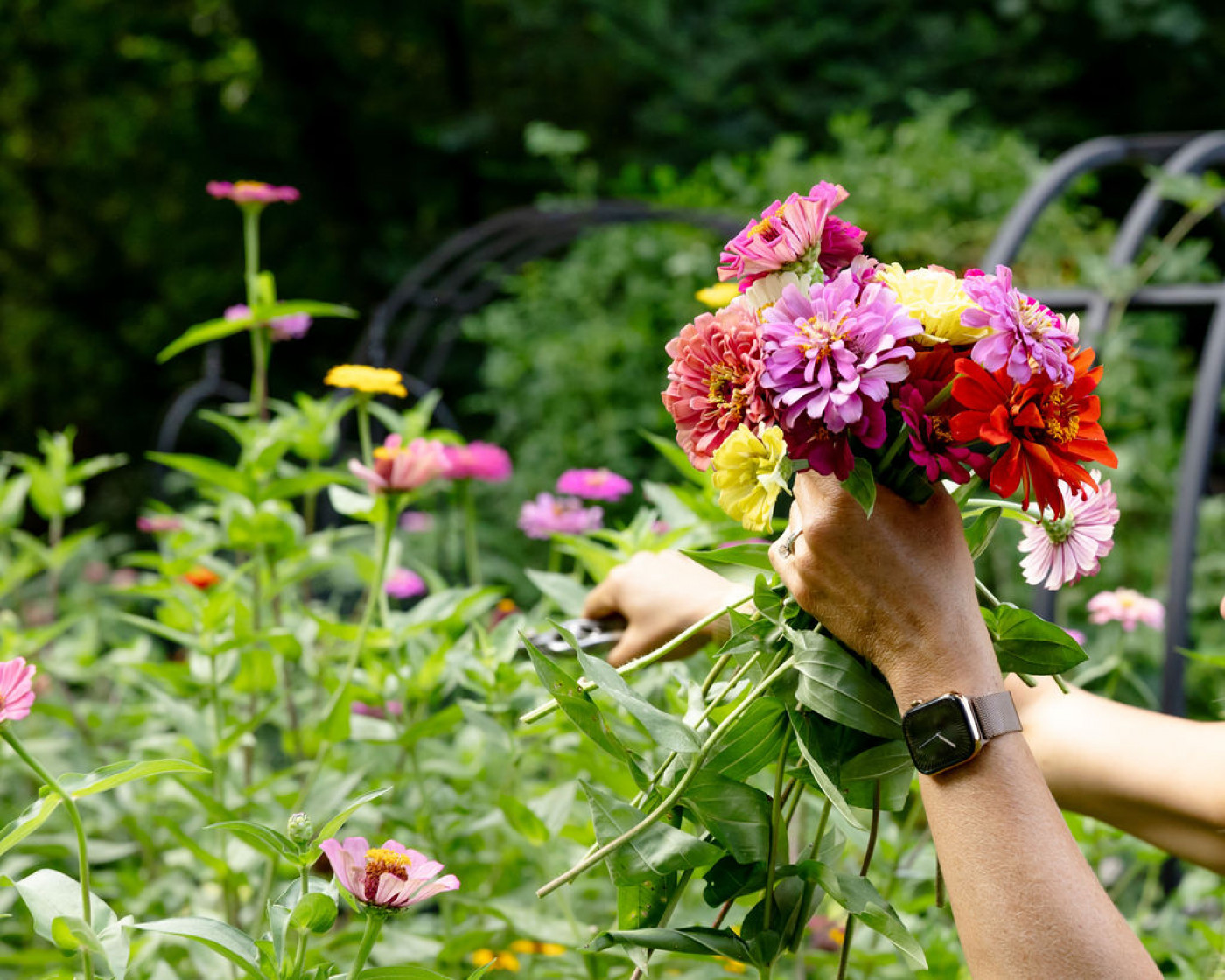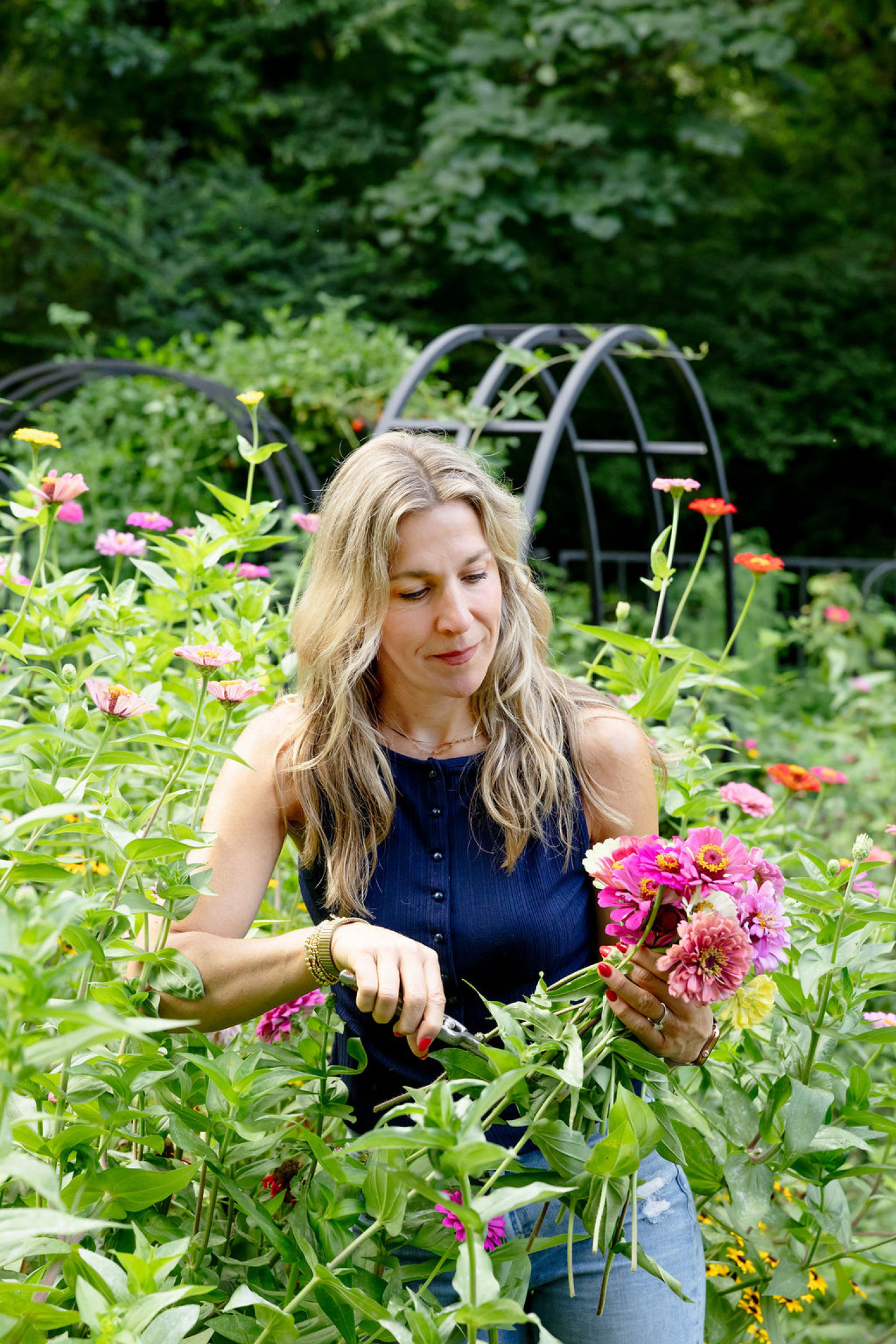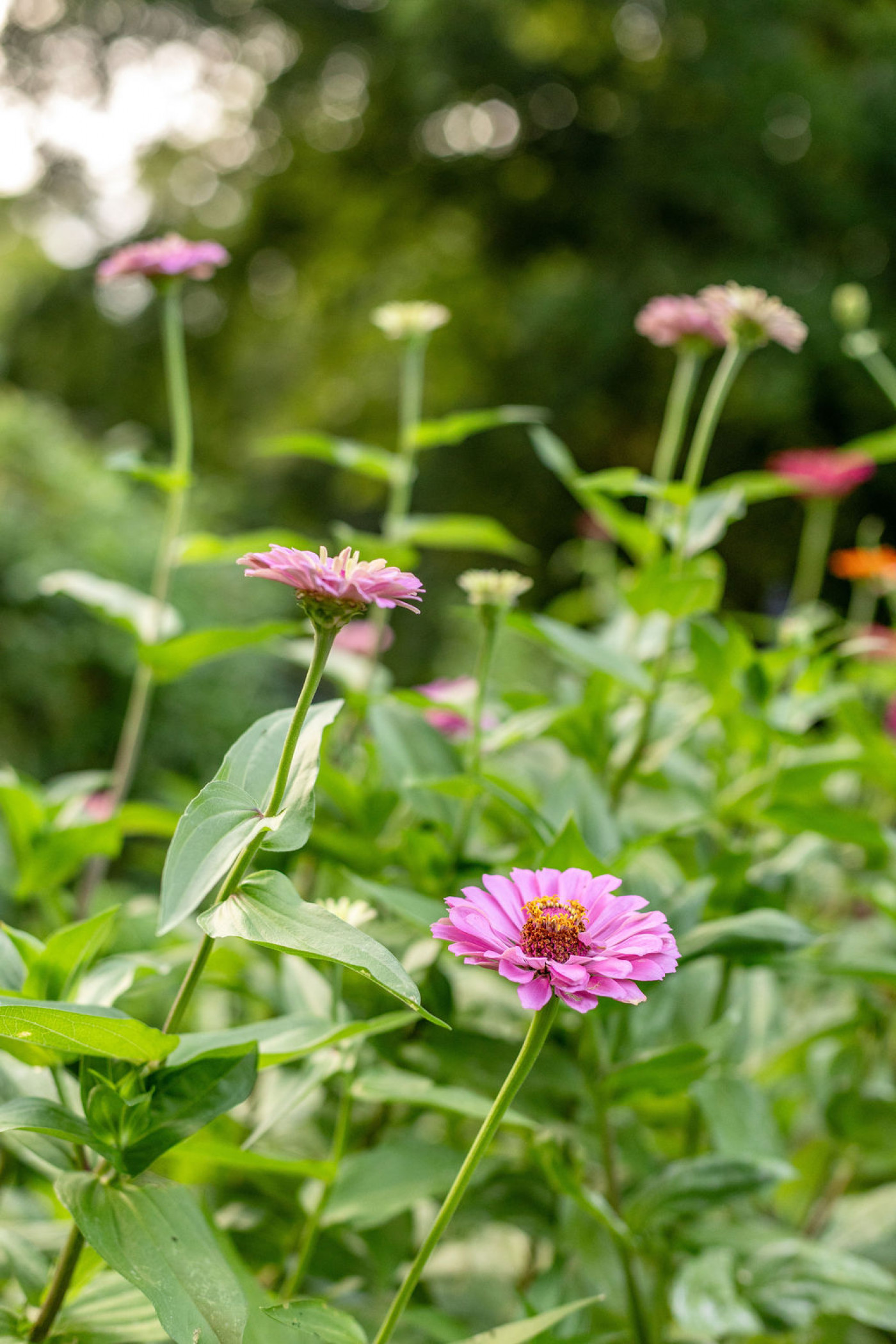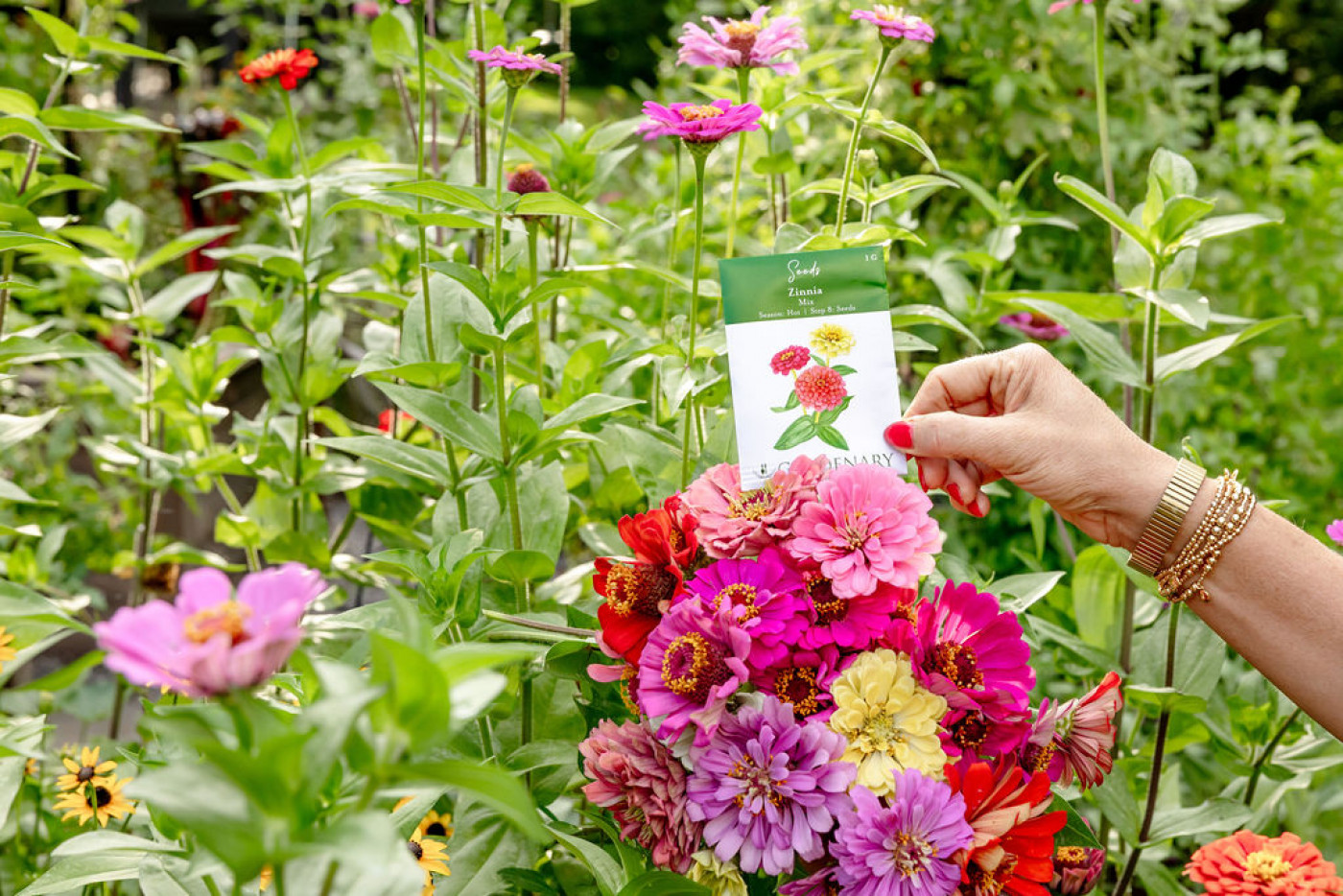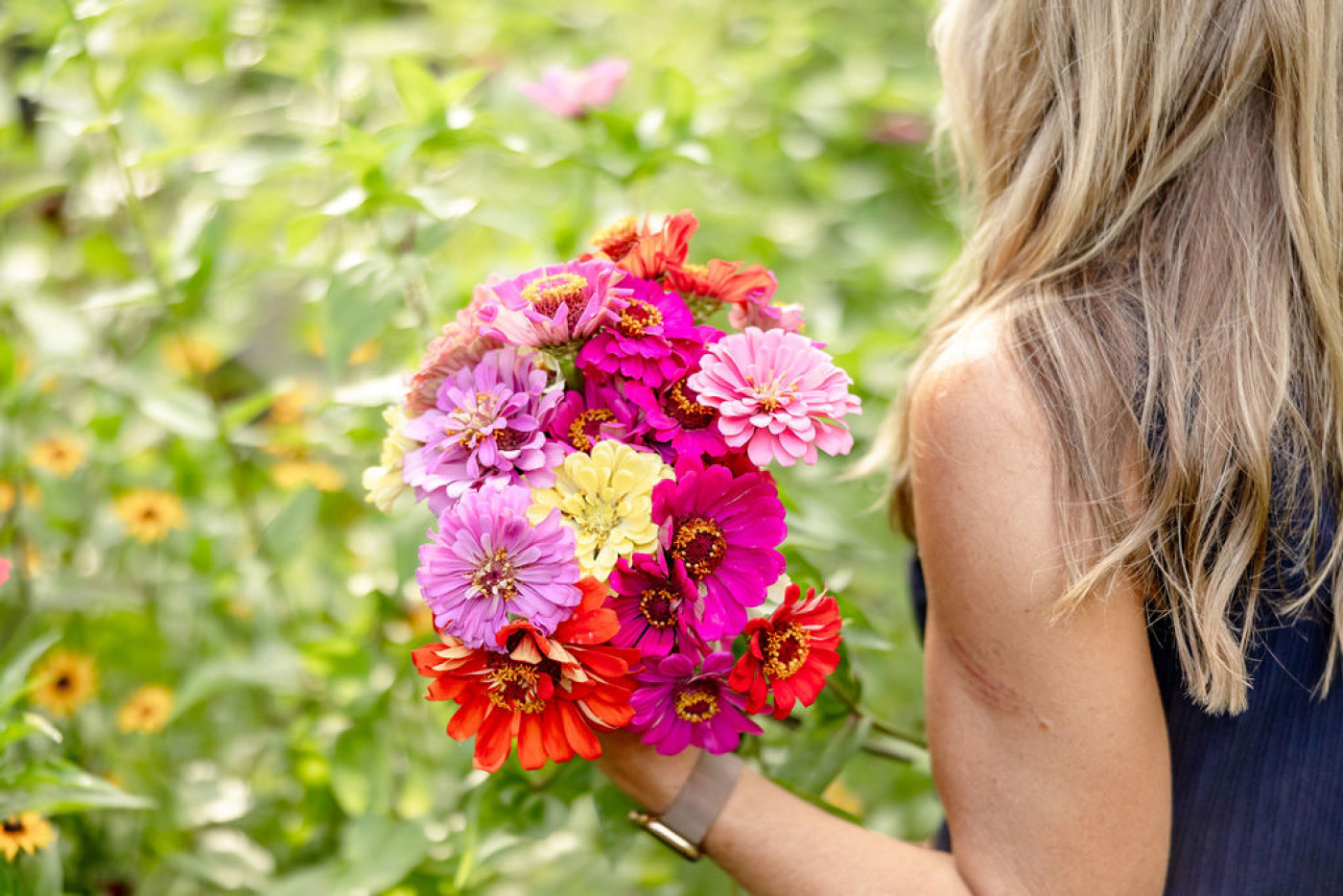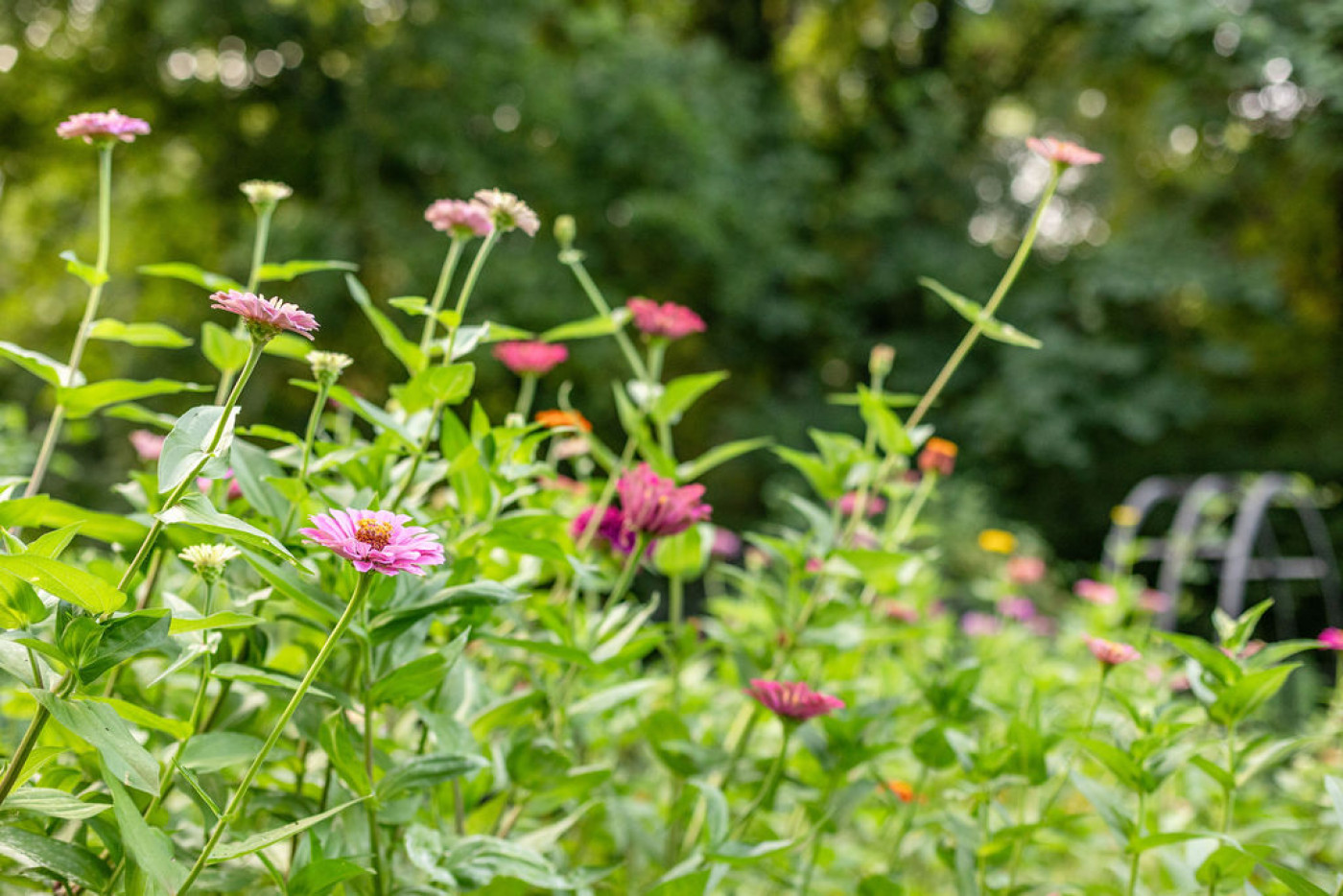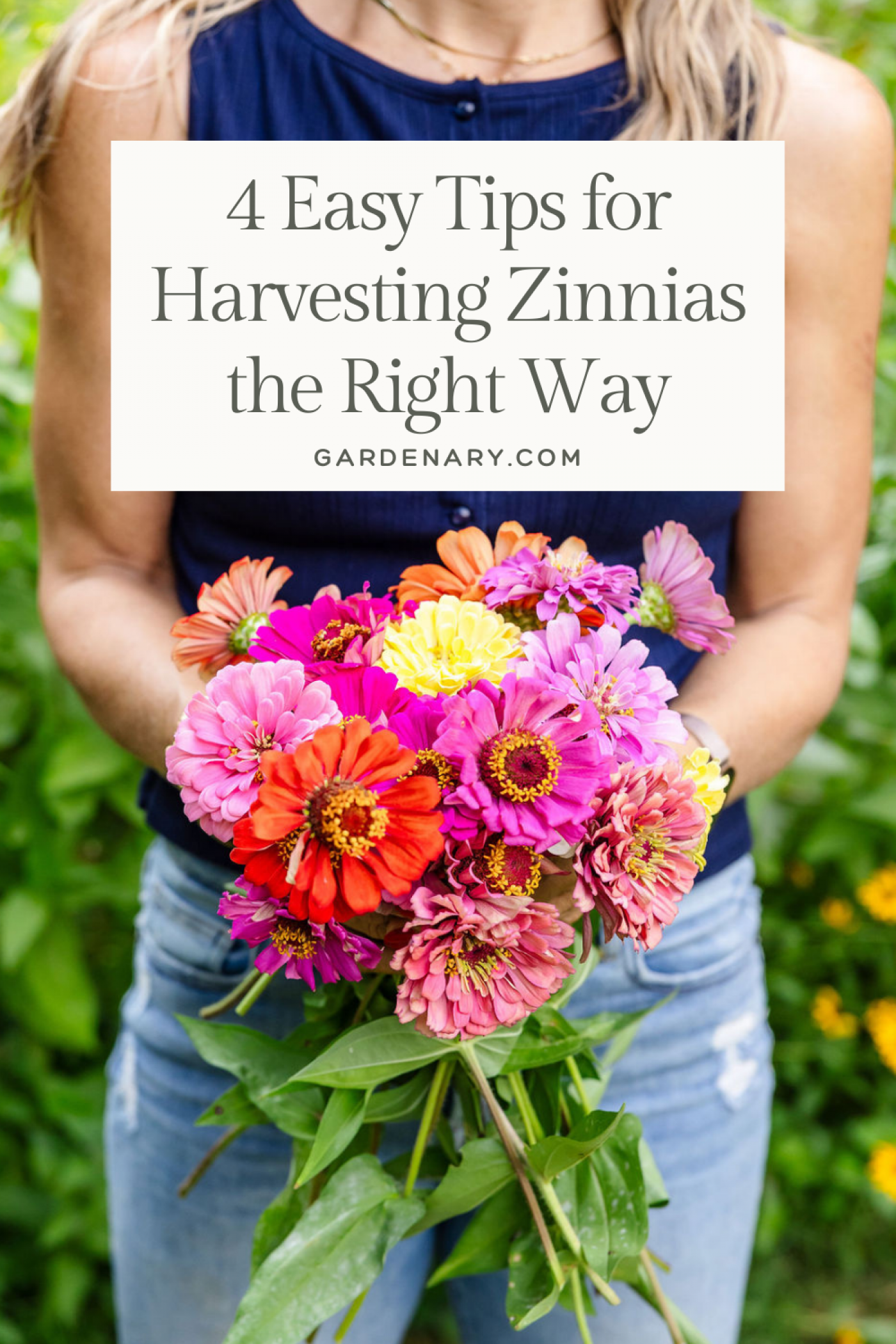Harvesting Joy from the Garden
There’s something truly special about stepping into your backyard and snipping fresh zinnias for the kitchen table. I love gathering bold, beautiful blooms to create cheerful centerpieces—and I want to show you just how easy it is to grow an abundance of cut flowers from a single pack of seeds.
At a Glance
- Get the most from your zinnias with four key harvesting tips: cut above a leaf node, harvest regularly, deadhead spent blooms, and remove lower leaves for cleaner bouquets.
- Discover how one zinnia bloom can provide a lifetime of seeds, plus a natural solution for managing powdery mildew the organic Gardenary way.
The Easiest Cut Flower to Grow
Zinnias are, without a doubt, the easiest cut flowers to grow, and they’re a shining star in our Easy Garden Kit. Every pack of zinnia seeds is packed with potential, and each seed can grow into a lush, bloom-producing plant. When you prune zinnias the way I teach, each cut encourages even more flowers. A single plant can produce bloom after bloom all season long.


Start Your Garden the Easy Way
Get growing with 10 foolproof seed varieties, a 120-page gardening guide, planting plans, and step-by-step video lessons—all designed to help you succeed. The Easy Garden Kit makes it simple, fun, and affordable to bring fresh food and flowers to your backyard.
Prefer to Watch?
If you’d rather see these tips in action, I’ve got you covered! Watch as I harvest zinnias from my backyard garden, share seed-saving secrets, and show you exactly how to mix up my go-to organic spray for powdery mildew. Grab your pruners and come along—it's all waiting for you in the video below.
4 Tips for Harvesting Zinnias
- Find the Right Leaf Node: Look for a leaf node that’s at least 6 inches down the stem and cut just above it. When you cut at the node, your plant will send out two new stems, doubling your blooms.
- Harvest Regularly: Frequent harvesting keeps spent blooms from lingering and draining the plant’s energy. The more you cut, the more your plant will focus on producing fresh, vibrant flowers.
- Deadhead to Redirect Energy: If you spot fading or dead flowers, be sure to deadhead by cutting the stem just above a leaf node. This prevents the plant from going to seed and instead encourages it to grow new blooms.
- Strip Lower Leaves for Bouquets: When making bouquets, remove any leaves that would touch or sit below the water line in your vase. This reduces bacterial growth and helps your arrangements last longer.
How to Save Zinnia Seeds
Here’s where the real garden magic happens: every single petal on a zinnia holds a seed. If you’ve ever wondered, “How many blooms can you get from one zinnia plant?”—the answer is, a lot! And with each bloom offering dozens of seeds, you can quickly build up a seed supply that will last for years.
When a bloom starts to fade, don’t toss it. Let it dry out completely. Once it’s dry, gently pluck the petals and you’ll find a seed at the end of each one. I like to store these petals with the seeds still attached in a cool, dry place over the winter. That way, in the spring, I can still see a hint of the bloom color, which helps me stay organized when it’s time to plant. It’s just one more way nature makes gardening easier.
Want to learn more? Read 5 Easy Steps to Save Your Own Zinnia Seeds and Grow Zillions of Flowers for a full walkthrough on collecting, storing, and replanting your own homegrown seeds.
A Long Season of Bloom
Zinnias grow from your last frost in spring all the way to the first frost in fall. In my zone, that’s April through November! And their benefits go beyond beauty. These blooms attract butterflies, bees, and all kinds of beneficial insects, making them powerful allies in your vegetable garden. They boost production and help cut down on pests, proving they’re not just another pretty face.
Bonus: Zinnia Mildew and How to Fix It Naturally
One of the most common challenges zinnia growers face is powdery mildew. Though it won’t hurt your blooms, it does look a little unpleasant. Luckily, there’s an easy, organic fix you can make at home with three simple ingredients:
- 1 gallon of water
- 1 tablespoon of baking soda
- 1 teaspoon of Dr. Bronner’s Castile soap
Mix well and spray directly on the leaves, but only during the early morning or late evening to avoid leaf burn. This natural remedy helps cut down on mildew without harming your pollinators. I avoid neem oil in the garden, as it can be harmful to bees and butterflies.
Gardenary's Organic Pest Control Method
Stop fighting pests. Instead, start gardening with them in mind. No panic. No harsh sprays. No endless guessing. Just a thriving, abundant garden that practically protects itself. With the Organic Pest Control Method, you’ll learn the exact steps I take to grow naturally and confidently, season after season.

Your Lifetime Supply Starts Now
So, whether you're deep in the growing season or stocking up for next spring, make sure you grab your zinnia seeds. They're the easiest cut flowers to grow and a cornerstone of the Easy Garden Kit. With just one pack, you can grow beauty, boost your veggie garden, and share seeds for years to come.
Happy harvesting!


Learn the Easiest Way to Grow Your Own Food
The Easy Garden Kit makes growing your own food simple and stress-free. Everything you need for success is included: the top 10 easiest seeds to grow, a detailed video course, a raised bed setup guide, planting plans, a growing guide, and a delicious recipes book for when you harvest.

